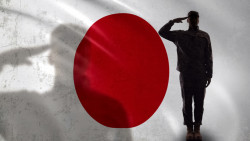
April 15, 2010
No Belt Required
Mastering the way of the warrior is easy—you just need to choose the right way
By Metropolis
Originally published on metropolis.co.jp on April 2010

Illustration by Eparama Tuibenau
When it comes to indulging expat-in-Japan clichés, I’m guilty as charged. Worked at an eikaiwa? Check. Ordered ten beers for myself at the last call of a nomihodai? Yep. Cycled around a mountain marveling at nature as if I’d never seen trees or birds before? Oh yes.
Yet the biggest cliché that I’ve embraced is Foreigner Takes Up Martial Arts. “Learn” would be the wrong word, seeing as how it implies sticking at something and progressing. “Take up” is more appropriate for those who, like me, flit from one style to another after encountering the slightest difficulty.
Different styles suit different personalities. Obvious reasons for studying a martial art might include self defense or keeping fit, while others are attracted to the discipline and spiritual side. For new arrivals to Japan, martial arts are an excellent way of immersing yourself in the culture, improving your Japanese and opening up new social networks. You’d have to be a pretty sad, uninspired sort if you just did it because you saw a Steven Seagal movie and thought, “Wow, this guy takes care of business.” But, alas, such was my case.
This shouldn’t be too surprising coming from someone who assumed Mr. Baseball was an accurate depiction of Japan. After watching Hard To Kill through a happoshu haze, I decided this was the stuff for me: aikido, or the “Way of Harmonious Spirit.” It’s a style designed both to defend the practitioner and protect the attacker from injury. I marveled at Seagal’s effortless movement and calm. Admittedly, when he smashed a pool cue over a drug dealer’s head, it seemed he had gotten a little sidetracked from the “protecting the attacker” principle. But no matter. It looked great, and it got results. I would hopefully never have to use it myself, except maybe to impress people at parties.
So began several years of false starts, roller-coastering enthusiasm and a lot of wasted time for every instructor I encountered. A critical factor in pursuing a martial art is to find one that suits your physical and mental capabilities. My baptism in aikido lasted a mighty three sessions, although the sensei and I both knew it was doomed after the first 20 minutes. I was too impatient for the subtle intricacies of the moves, footwork, or putting on the uniform properly. Extremely unsuitable.
Having moved on from Seagal, I still wanted to learn something, thinking it would be a rare accomplishment. Next was karate. Things were fine when I was standing in front of a mirror practicing the kata, but noticeably difficult when sparring with a person. I took kicks to the head better than anyone in the class, but that won’t win you tournaments. Explosive power and mental toughness were required. Again, unsuitable.
In judo, I didn’t even have a height and weight advantage, as it attracts some of the biggest fighters in martial arts. It also proved to be at least as technical as aikido; worse still, it had a scoring system, so there was no doubt as to who the loser was. Colored belts for levels simply reinforced this. If a junior high school girl complains about having to pair up with you, you know you’ve got problems.
It was a shock, then, when I discovered a martial art that matched both my temperament and ability. Fittingly, it took a child to lead me to it. When my son turned 5, he told me about an activity his friends did at the local gym. It was something called Sports Chanbara, and based on the name, I couldn’t imagine what it involved. I arrived at the gym to see adults and kids racing around, hitting each other with what seemed to be foam swords. And they were.
The instructor explained the basic rules, then asked me to join in. The object was to hit and not be hit. You could thwack any adult or child with your 60cm kodachi sword, made of reinforced foam. Or you could simply run around the gym avoiding people for the duration of the game, which sounded like a smart strategy.
There were no belts, no levels and there was clearly no pain. As Steven no doubt did many years ago in his Osaka dojo, I closed my eyes and began to envisage my beckoning action film career. Under titles such as Maim Thy Neighbor and Spill Your Guts, I’d play a sensitive yet violent monk, taking down cartels of crazed ex-marines with my trusty foam sword. The journey would be complete.







